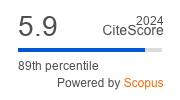Article | Open Access
Watching the Watchdogs: Using Transparency Cues to Help News Audiences Assess Information Quality
| Views: | 1863 | | | Downloads: | 3797 |
Abstract: The myriad of information sources available online can make it hard for the average reader to know whether a piece of content is credible or not. This research aims to understand if the public’s assessment of the credibility of information could be more accurate with the help of transparency features that act as heuristic cues under the elaboration likelihood model and the heuristic-systematic model, and if the cues increase cognitive absorption. Two between-subjects studies were performed, one with a young demographic (N = 68) and another with a representative sample of the adult population (N = 325). The stimuli contained information boxes designed to indicate that the story was not written in a traditional journalistic style (message cues) and missing background information on the author (source cues). Results show significant effects of the cues on credibility assessment and cognitive absorption.
Keywords: algorithmic cues; cognitive absorption; credibility; information quality; misinformation; transparency
Supplementary Files:
Published:
© Brian Keith Norambuena, Katharina Reis Farina, Michael Horning, Tanu Mitra. This is an open access article distributed under the terms of the Creative Commons Attribution 4.0 license (http://creativecommons.org/licenses/by/4.0), which permits any use, distribution, and reproduction of the work without further permission provided the original author(s) and source are credited.


